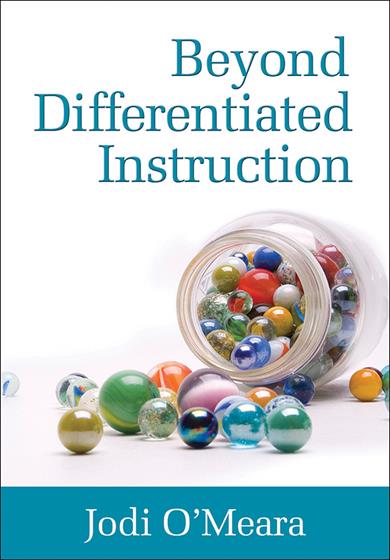Description
"This guide through the ten steps of implementing differentiated instruction is an invaluable resource for providing meaningful curriculum to ensure every student is learning."
—Donnajo Smith, Teacher and Program Specialist for Gifted
Bureau of Curriculum and Instruction, Florida Department of Education
"In an easy-to-read format, O'Meara outlines how teachers can structure their assessment, planning, and instructional practices to help all students invest in their learning."
—Kimberly McAfee, Third-Grade Teacher
B.D. Gullett Elementary School, Bradenton, FL
I know I should differentiate instruction, but how do I actually do it in my classroom?
Differentiated instruction focuses on helping all students learn and achieve. This invaluable book goes beyond the theory of differentiated instruction to actual classroom practice, showing teachers step-by-step how they can successfully put differentiation into action to create an empowering learning environment for every child.
Author Jodi O'Meara presents a 10-step approach to differentiating instruction, supported by realistic strategies and manageable techniques that are easily adaptable for any K–12 student. This resource includes:
- A guided, step-by-step framework for creating an effective differentiated instruction program
- Vivid case studies illustrating the how-to's of differentiated instruction, from planning through implementation and assessment
- Recommendations for appropriately structuring the pace and flow of instruction
- Guidance on when to use tiered instruction and accommodations, including the relationship between differentiation and Response to Intervention (RTI)
- Classroom-ready templates, resources, and tools for each step of the process
Discover how differentiated instruction can help your students master curriculum fundamentals and benefit from learning that lasts!
Key features
- Provides educators with a step-by-step process to plan the comprehensive practice of differentiated instruction rather than depicting differentiation as a purely theoretical model or a collection of instructional strategies
- Addresses the issue of differentiated instruction in relation to standards and describes the importance of using the standards as a platform from which to proceed
- Encourages true self reflection on the part of the teacher to consider areas of personal knowledge, attitudes toward content, and attitudes toward learners
- Includes detailed instructions for pre-planning, planning, and implementing differentiated instruction, managing instructional flow, and engaging learners through whole group instruction, small group instruction, pacing, and acceleration for learners at mastery levels
- Addresses the need for continuous monitoring of students and their progress and includes information on assessing the physical and mental state of the learner, considering the context and environment in which the learning is taking place, and managing the expectations of students
- Explains when to use tiered instruction and accommodations and addresses the relationship between differentiation and response to intervention
- Provides guidelines for developing questions at the highest levels of knowledge and creating opportunities for authentic products and student performances
- Includes an appendix with templates, resources, and tools correlated to each chapter


